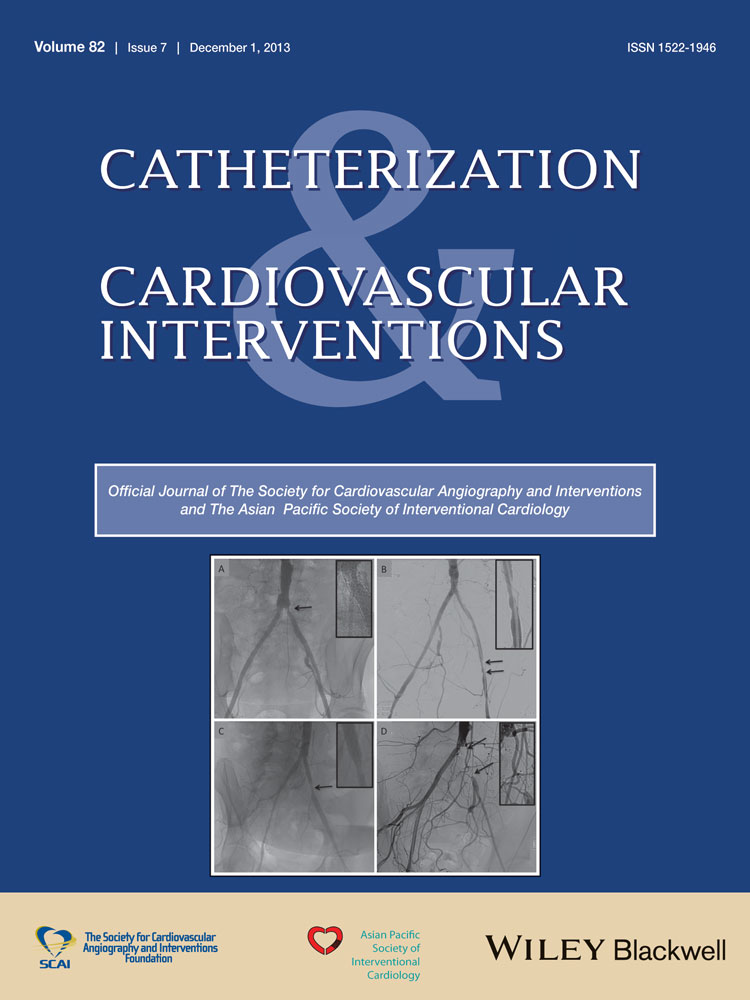Angiographic characteristics of femoropopliteal in-stent restenosis: Association with long-term outcomes after endovascular intervention
Conflict of interest: Nothing to report.
Abstract
Objectives
The purpose of this study was to identify the relationship between angiographic patterns of restenosis and outcomes after endovascular treatment of femoro-popliteal in-stent restenosis (FP-ISR).
Background
ISR is a frequent clinical problem after femoro-popliteal stenting.
Methods
This was a single center study of all endovascular interventions for FP-ISR from 2006 to 2012. Class I ISR was defined as focal lesions ≤50 mm; Class II ISR as lesions > 50 mm; and Class III ISR as stent chronic total occlusion. Recurrent ISR was defined as peak systolic velocity ratio > 2.4 by duplex ultrasound.
Results
Among 75 cases of FP-ISR, 28 (37%) were Class I, 22 (29%) were Class II, and 25 (33%) were Class III. The mean lesion length was 26 mm for Class I, 135 mm for Class II, and 178 mm for Class III ISR. Patients with Class III ISR more frequently had ISR extending into both the superficial femoral and popliteal artery (48% vs. 18%, P = 0.005). Balloon angioplasty was used most frequently to treat Class I ISR, while adjunctive atherectomy and/or stenting was used for almost all cases of Class III ISR. During 2-year follow-up, rates of repeat restenosis were 39% for Class I, 67% for Class II, and 72% for Class III ISR (P = 0.04). Rates of stent occlusion were 8% for Class I, 11% for Class II, and 52% for Class III ISR (P = 0.009). Class III ISR was associated with significantly increased risk of recurrent ISR (HR 2.4, 95% CI 1.1–5.6) and recurrent occlusion (HR 5.8, 95% CI 1.8–19.0) compared to other types of ISR.
Conclusion
Angiographic patterns of FP-ISR are important determinants of subsequent outcomes. Repeat restenosis and occlusion remain common despite currently available technologies.© 2013 Wiley Periodicals, Inc.




